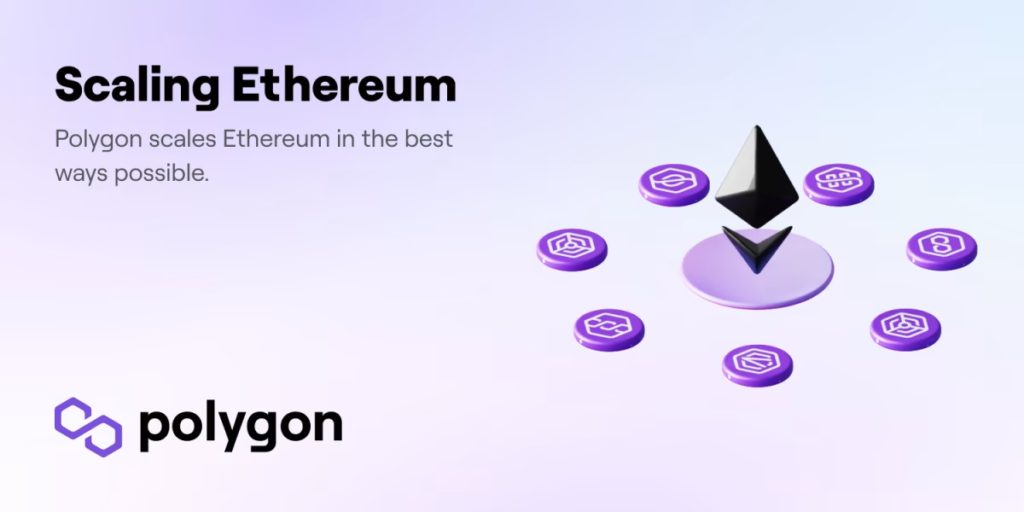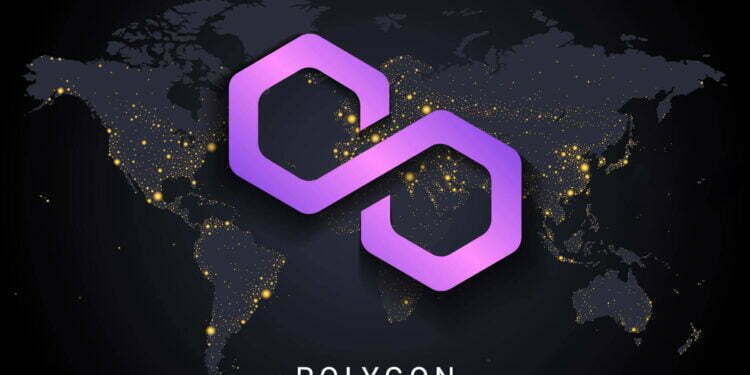Polygon has announced the introduction of a new type of dedicated blockchain network as Polygon will invest $100M in projects that use its Supernets blockchain. The organization plans to invest money into projects that are interested in improving their growth through the utilization of a dedicated Polygon Supernet network. Polygon is a blockchain that is based on Ethereum and makes use of a variety of strategies in order to grow to millions of transactions and reduce the costs to the environment.
It has handled one billion different transactions and has more than 7,000 applications, many of which are games. A supernet is a type of internet network that is created when numerous smaller networks, known as subnets, are combined to form a single, much bigger network. The advantages include the preservation of address space as well as efficiencies in routers regarding memory storage and the processing overhead associated with such operations. This blog explains how Ethereum scaling project Polygon will invest $100M in projects that use its Supernets blockchain (Takahashi VentureBeat).
More Green-Energy Plans from Polygon?
Blockchain companies are perpetually tasked with improving their efficacy. A transaction on Polygon’s network consumes the same amount of energy as two Google searches, the company stated earlier this year. However, this investigation uncovered faults in the platform’s estimation, and the energy use could be 1,000 times more. Recently, the corporation finally responded to repeated inquiries regarding the accuracy of that evaluation by referring to an announcement. In April, Polygon declared that it would become “carbon negative” in 2022 by contributing $20 million for tree planting and other energy-offsetting initiatives.
Recently, Polygon raised $450 million for its blockchain technology and hired YouTube Gaming head Ryan Wyatt to develop its blockchain gaming platform. According to the platform, the Polygon Supernets is a dedicated network that companies, organizations, and initiatives can use without incurring any additional hosting or operational charges. According to the company, the Polygon Supernet will expedite the adoption of blockchain technology in both new private and public blockchain networks for both decentralized applications (dApps) and businesses in general.
Polygon Supernets lowers the barrier to entry for developers who have previously used Polygon Edge (formerly Polygon software development kit, or SDK, introduced in 2021) and want their own private, decentralized, and highly performant network. Polygon Edge is an adaptable blockchain stack that enables developers to create and launch specialized blockchain networks. It is a modular platform meant to accommodate various scaling and infrastructure solutions, including sovereign and enterprise EVM (Ethereum Virtual Machine) chains and complete Layer 2 solutions.

Scalability and throughput are the two issues that present the greatest obstacles to developers working with public networks. Developers are able to construct apps with millions of daily active users and manage tens of millions of transactions per day when they utilize the solutions that are provided by Polygon Edge. These solutions enable rapid and seamless scaling even when there is an intense transaction demand. Supernets are viewed by the platform as Polygon Edge networks on steroids.
While announcing that Ethereum Polygon invests $100M Supernets blockchain Takahashi VentureBeat, the platform mentioned that Supernets are a type of blockchain network that have several essential qualities that are designed to help minimize the problems described above and enable widespread adoption of the blockchain project as well as blockchain technology in general. These are the most essential of these qualities. The Supernet is constructed and utilized for a particular application. Polygon Technology creates an incentive for professional validators.
These validators are individuals who utilize their computer systems to validate blockchain transactions. The platform awards them an amount in Matic token that is based on the quantities staked. This amount is much more than sufficient to cover all of the validator’s operational and hosting expenditures that have been incurred. Validators check all transactions on each supernet. Before certifying the network, validators stake Matic tokens on the mainnet. These validators are formed by third-party staking firms. Polygon stated that a high level of security may be accomplished because validators are vetted.
Defining Two Types of Chains Offered by Polygon
While Polygon will invest $100M in projects that use its Supernets blockchain, it is essential to understand the two types of chains offered by the platform. When Polygon Supernets are made available to developers, they will have the option of applying for either a Polygon Supernet Sovereign Chain or a Polygon Supernet Shared Security Chain. According to writer Dean Takahashi, a Polygon Supernet Sovereign Chain is a network administered by a single professional validator to reduce deployment and maintenance expenses.
Dean Takahashi is the lead writer for VentureBeat’s GamesBeat. Since 1988, he has worked as a journalist covering the technology industry, and since 1996, he has covered gaming as a beat. Since 2008, he has been with VentureBeat. Before that, he contributed to the San Jose Mercury News, Red Herring, Wall Street Journal, Los Angeles Times, and Dallas Times-Herald. He has written two books: “Opening the Xbox” and “The Xbox 360 Uncloaked.” The yearly GamesBeat and GamesBeat Summit conferences are organized by him. He resides in the Bay Area of San Francisco.
Explaining the initiative, Dean Takahashi explained that with expert validators staking Matic tokens to validate the network, a Polygon Supernet Shared Security Chain is the simplest road towards decentralization and excellent network security. Polygon Supernets’ core infrastructure solution is Polygon Edge. All Polygon Edge features and attributes are designed to operate in a highly secure and decentralized environment within supernets. Polygon Edge is a development tool with configurable parameters that allow users to build networks suited to their individual requirements.
Currently, scale and throughput provide the greatest obstacles for developers with access to public networks. While making the announcement that Ethereum scaling project Polygon will invest $100M in projects that use its Supernets blockchain (Takahashi VentureBeat), the company said, at the time of writing, over 20 different dApp projects and enterprises were using Polygon Edge to get greater performance, constant and predictable throughput for their use case, and customization by adjusting every part of their blockchain network.
The Potential of Polygon Edge
While talking about how Polygon will invest $100M in projects that use its Supernets blockchain, the company suggests looking at how the transformation of website performance brought about by the cloud can help in understanding the possibilities of Polygon Edge. When it came to establishing a new website more than a decade ago, the most obvious choice was to make use of a shared hosting provider. Because of the shared nature of the server, this resulted in unpredictably slow loading times due to the restricted bandwidth available.
Since then, the so-called “cloud revolution” has made it much simpler for websites to maintain a consistent level of performance by having their own servers that are protected to the same standard and which are not influenced by any other parties. While announcing how Ethereum Polygon invests $100M Supernets blockchain Takahashi VentureBeat, the business said that developers are able to create dApps on blockchain using Polygon Edge without having to worry about the network’s performance or security being compromised.
Polygon’s cofounder, Sandeep Naliwal, issued a statement in which he expressed the company’s pride in the achievements of Polygon Edge to date and its elation at having been able to build upon these achievements in order to provide customers with supernets. The infrastructure toolset enables users to swiftly and simply accomplish their goals. Polygon’s mission is to bring widespread adoption to Web3, since the company believes that the provision of an extensive variety of use cases for businesses is essential to the success of blockchain technology.
Polygon’s objective has always been to provide developers the freedom to create whatever they can imagine for themselves. Utilizing Polygon Supernets is consistent with other scaling methods that are currently part of the platform’s product offering. Supernets will make it possible for developers to bring zero-knowledge, privacy, and security features and systems that have been developed at the platform to life on their own chains. Polygon Edge will continue its objective to offer the newest zero-knowledge, privacy, and security features and systems to the public.
Matic from Polygon can protect Supernets. They are offering a “shared security” layer in the form of a Matic-staked validator marketplace for Edge users who wish to utilize Proof of Stake as a security method. Projects who decide to utilize this service will immediately gain access to a decentralized and trustworthy Proof of Stake validator set, allowing them to bypass the difficulties associated with first establishing a validator network. Additionally, Polygon validators will stake Matic and earn incentives in Matic.
This means that there is no work required from application or project teams regarding the incentivization and sustainability of validators. With the help of this service, projects are able to reap the benefits of Proof of Stake security without having to devote any bandwidth or resources to the technology. Instead, they are free to concentrate entirely on their primary product and the accomplishment of their objectives. Despite the fact that this service is not required, the company predicts that it will have a significant amount of demand because of the benefits it provides.
READ MORE:
What Traders Should Expect from The Ethereum Merge: Everything You Need to Know
Cardano’s Vasil Upgrade is Live
SEC Asserts that US Authorities Have Jurisdiction over the Network of Ethereum























